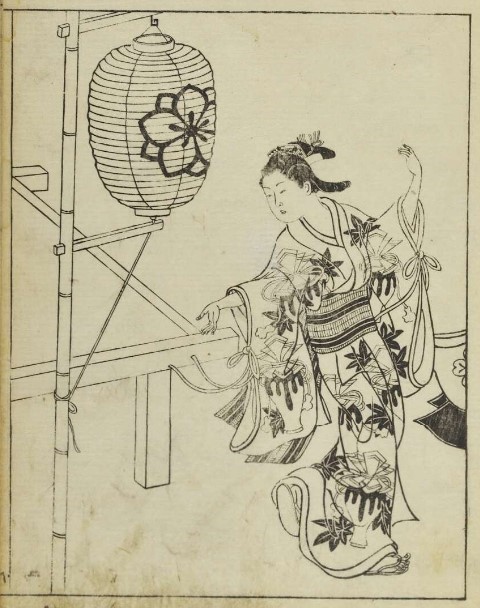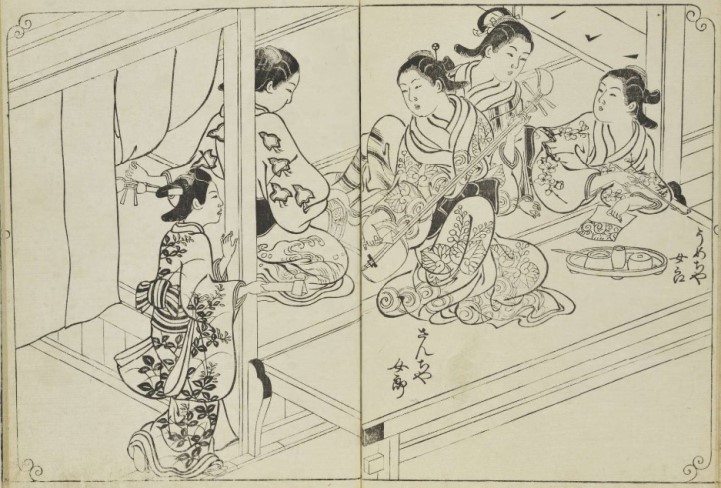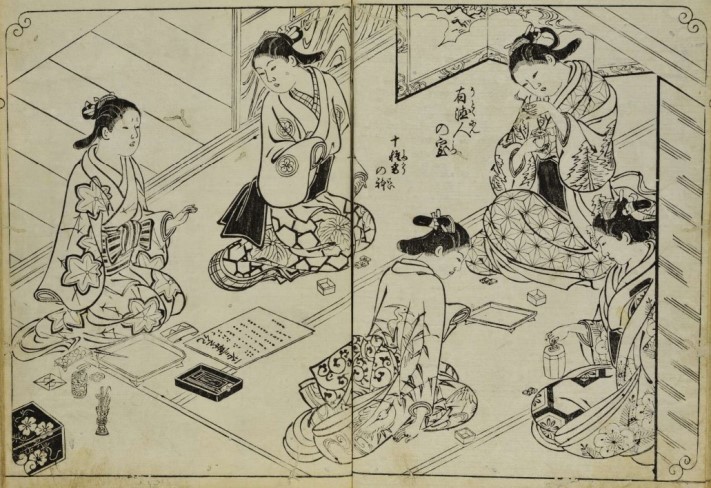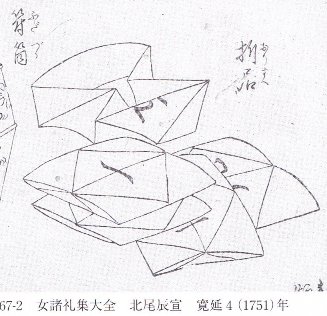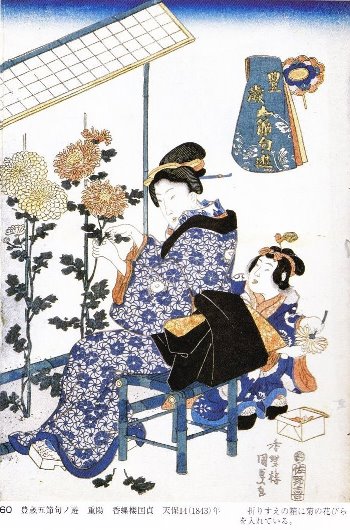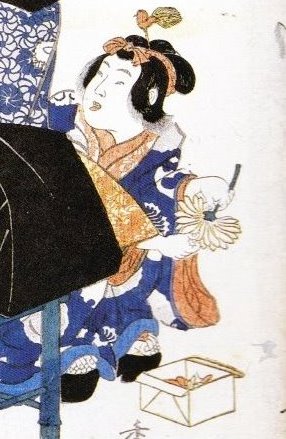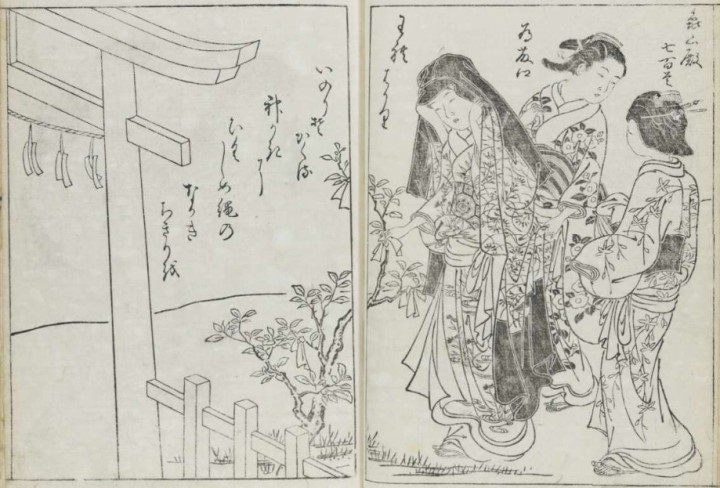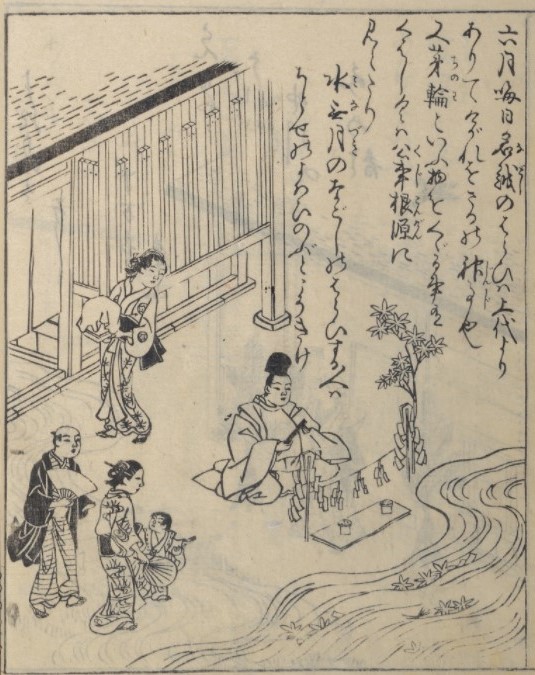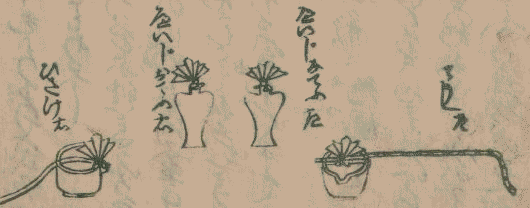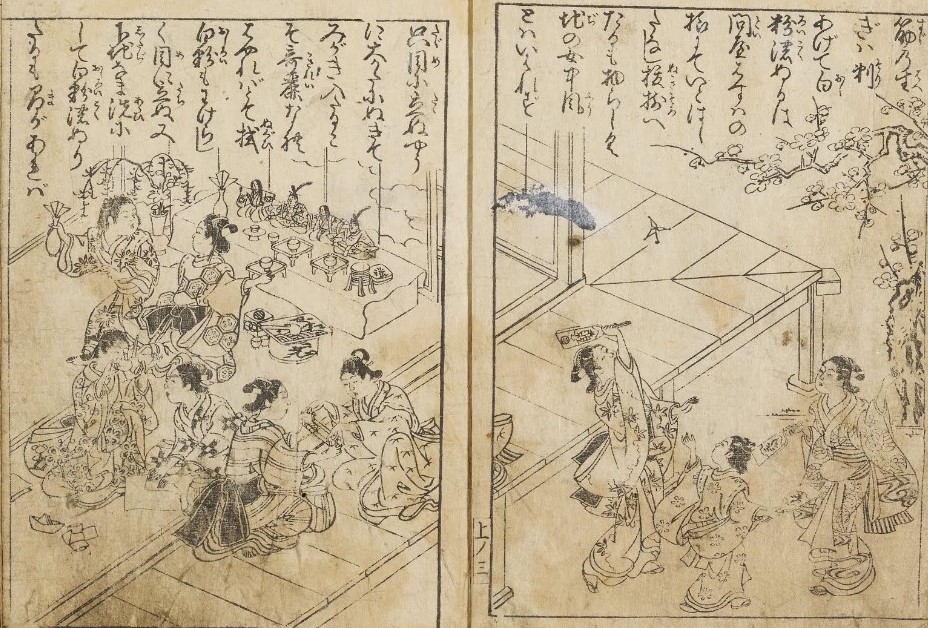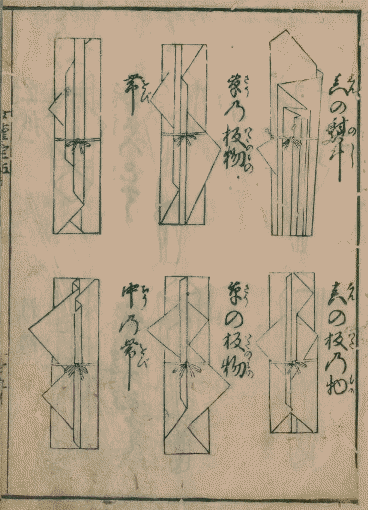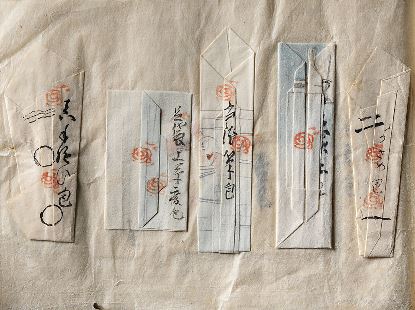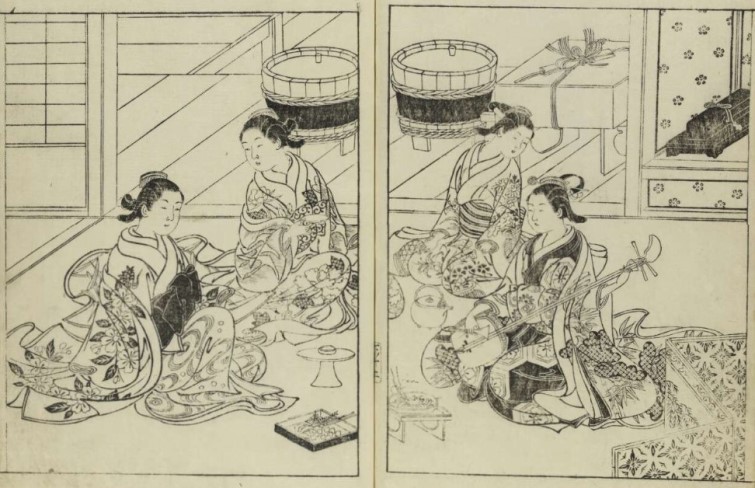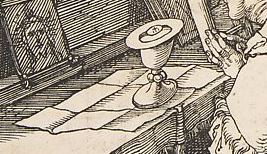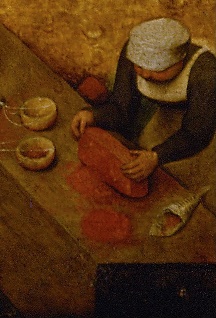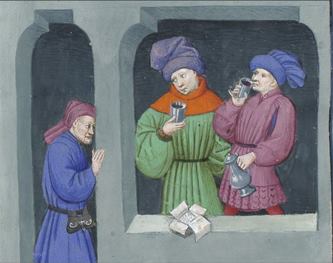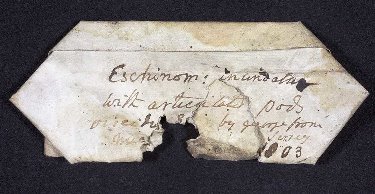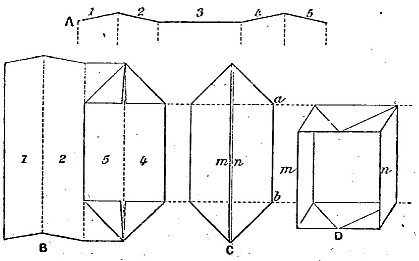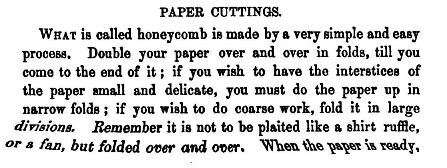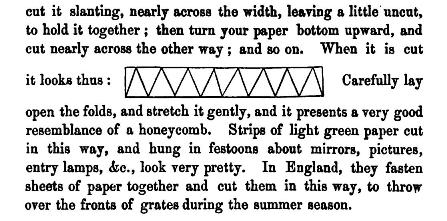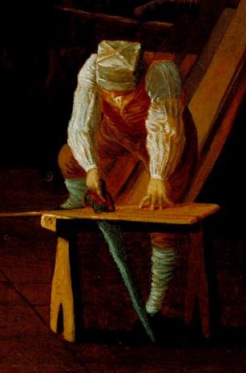| The Public Paperfolding History Project
x |
|||||||
| An Outline History of Practical, Religious, Ceremonial and Etiquettical Paperfolding in China, Japan and Western Europe | |||||||
Part 1: Practical and Religious Paperfolding in China A: Paper for wrapping According to Tsien Tsuen-Hsuin in 'Science and Civilisation in China, Volume 5, Part 1: Paper and Printing':
This is sometimes taken as the earliest evidence we have for folded paper being used as wrapping, but the passage clearly allows the interpretation that it could have been used for padding between the mirrors rather than wrapping around them. However, the same book offers other evidence of paper having been used for wrapping in the 2nd century and thereafter. ********** B: Paper umbrellas Folding paper umbrellas are believed to have been in use from the late 4th or early 5th century onwards. ********** C: Paper lanterns According to Tsien Tsuen-Hsuin in 'Science and Civilisation in China, Volume 5, Part 1: Paper and Printing': '
********** D: Paper armour According to Tsien Tsuen-Hsuin in 'Science and Civilisation in China, Volume 5, Part 1: Paper and Printing': 'pleated paper armour which could not be pierced by arrows' was in use in the late Tang dynasty (618 to 907). ********** E: Symmetrical papercuts ********** F: Letterfolds ********** G: Sewing kits ********** H: Funeral offerings ********** Part 2: Practical, Religious, Ceremonial and Etiquettical Paperfolding in Japan The knowledge of how to make paper is thought to have reached Japan from China via Korea in about 610. We can reasonably conjecture that it was not long after this that paper was being folded for everyday practical purposes. However, evidence to confirm this conjecture is largely lacking. A: Practical paperfolding i. Pleated Collapsible Paper Fans The earliest kind of paperfolding we know of from Japan is the folding of kawahori or pleated paper fans. In 988, for instance, such a fan appears in a document, 'Relationship with Japan of the Song History', which lists a kawahori as being among gifts given from Japan to the Song Dynasty in China. The oldest surviving example, the remains of which were found in the village of Akitsu, was made around 1000. There is a record of a kawahori, or pleated paper folding fan, being gifted to the Chinese Song Dynasty in 988. ********** ii. Collapsible Paper Lanterns Collapsible paper lanterns sometimes appear in Edo period prints, and have remained in use until the present day. This print is by Nishikawa Sukenobu from 'Ehon tokiwa gusa', and was published in 1731. This type of lantern was probably imported from China at a much earlier date.
********** iii. Books ********** iv. Letterfolds In the period under consideration, letters were generally written on oblong paper, arranged landscape fashion, then folded sideways several times to reduce their width to a more manageable size. Sometimes either one, or both, of the ends of this strip were then folded backwards to prevent the letter unfolding while it was being delivered. This type of letter folding was purely practical but Japanese literature mentions, and woodcut prints sometimes show, other ways of folding, or wrapping letters which, although they may have served a practical purpose, may also have had a ceremonial or social significance. Two famous books, the 'Pillow Book of Sei Shonagon',which was completed by 1002, and the 'Genji Monogatari' (The Tale of Genji), which was completed around 1021, contain references to folded letters, which are characterised as straight folded, knotted, twisted, or wrapped. For instance, in her list of 'Depressing Things' Sei Shonagan mentions a 'twisted or knotted' letter:
Love letters in particular, it appears, were often folded into knots, but it is not clear that every knotted letter was a love letter, or that every love letter was folded into a knot. ********** In another list, of Hateful Things, Sei Shonagon also mentions the custom, apparently ubiquitous among the samurai classes, of carrying a folded wad of thin, almost tissue-like paper, known as kaishi, in the front folds of their robes, which could be used for mundane everyday purposes. It is likely that, on occasion,when no more suitable type of paper was at hand, this paper was also used for the writing of letters and poems, the folding of tsutsumi (see below), or perhaps even for the folding of paper packets or other paperfolding designs.
********** This print, in which the woman on the left is holding a knotted letter, comes from Nishikawa Sokenobu's illustrated book 'Hyakunin Joro Shinasadame' (100 Women Classified According to Their Rank), which was published in 1723.
********** v. Packets and containers A design for a folded package, which can be called the Basic Packet, occurs in many early woodcut prints,from 1648 onwards. It is distinguished by the simple way in which both short ends are folded back underneath (in a similar way to the Straight Letter). Basic Packet designs occur in various forms, either plain, or decorated with one or two protruding triangular flaps. I do not know the significance of these variations. In the print below, which is by Nishikawa Sukenobu, and comes from from Volume 1 of 'Hyakunin Joro Shinasadame', published in 1723, the Basic Packet is lying on the floor in front of the woman on the left. In this case it is a version decorated with two protruding triangular flaps.
********** Another kind of practical container, which we can call the Collapsible Box, first appears in the 'Onna Shorei Shutaizen' by Tatsunobo Kitao which was published in 1751. This design is folded from a 2x3 rectangle.
********** The same design, although with the handles folded in a different way, appears, as a box being used to hold chrysanthemum petals, in a print by Kunisada Utagawa, which can be dated to 1843.
********** B: Religious paperfolding The main religious use of paperfolding in Japan was for the construction of Shide, sacred streamers, which are symbols of purification in the Shinto religion and are often attached to a shimenawa, a rice straw or hemp rope, that marks the boundary of the sacred area of a Shinto shrine or surrounds a rock or tree etc., believed to shelter a kami (a spirit). Shide were originally made from cloth, but there is evidence that Shide made by cutting and folding paper, were in use by 1702, although the practice is probably much older than this. This print from the picture book 'Ehon chiyomigusa' by Nishikawa Sukenobu, which was published in 1741, shows a simple form of shide hanging from a shimenawa (a sacred rope) attached to a torii (the gate that forms the entrance to a shrine).
********** This print from the picture book 'Ehon Setsugekka' by Nishikawa Sukenobu, which was published in 1768, shows two gohei (a staff with two shide attached) stuck in the ground. Between them is a shimenawa from which small shide are hung.
********** C: Ceremonial paperfolding Stylised Paper Butterflies / Ocho and Mecho Stylised folded paper butterflies, were, and still are, attached to sake kettles during Shinto wedding ceremonies. Evidence for their early use can be found in the ‘Onna Chohoki’, published in 1692, but, once again, it is likely that they were in use much earlier. The butterflies in the illustrations in the 'Onna Chohoki' seem to be of a single design, but they are also found in more complex differentiated male and female forms, called Ocho and Mecho.
Detail of a page from the 'Onna Chohoki' ********** Similar folded paper butterflies were also used as decorations for sake bottles during certain Japanese festivals, such as Hinamatsu (the Doll's Festival) which is still celebrated annually on March 3rd. This print, by Nishikawa Sukenobu, from 'Onna Fuhzoku Tama kagami', which was published in 1723, shows older children celebrating Hinamatsu. The child to the upper left is holding a sake bottle decorated with a folded paper butterfly. Another sake bottle decorated in the same way sits on the table in front of the dolls.
********** D: Etiquettical paperfolding The word 'etiquettical' is an uncommon, but genuine, English word. This kind of paperfolding, sometimes called orikata, originated among samurai clans whose whole lives were lived according to a formal code of etiquette. The words 'ceremonial' and 'formal' are often used to describe this kind of paperfolding, but it seems to me that neither is quite correct and that 'etiquettical', although uncommon, should be preferred. There were several, perhaps many, schools of etiquette in the samurai period, of which the Ogasarawa school was, and remains, the most influential. Part of the formal etiquette of Samurai families was the folding of tsutsumi (or wrappers). These were of two types. Open wrappers were used to wrap / decorate the stems of flowers or greenery displayed within the home, or given as gifts, on various specific days throughout the year. Closed wrappers were packages designed to contain seeds, spices etc. In both cases the designs were specific to the items they were intended to contain. According to Ise Sadatake, writing in his book 'Hoketsuki', which was published in 1764, this type of paperfolding dates back to the Muromachi period (1333 to 1573). This may well, of course, be true, but the earliest evidence for these designs that I am currently aware of also comes from the ‘Onna Chohoki’, published in 1692.
A specimen page from the 'Onna Chohoki' ********** Actual folded examples of many of these wrappers, folded in the third month of 1697, under the instruction of a master of the Ogasawara school of etiquette, survive in an album, 'Origata Tehon of Kikuchi Fujiwara no Takehide', which is now held in the collection of the Metropolitan Museum in New York.
A specimen page from the 'Origata Tehon' ********** ii. Noshi Noshi are folded paper decorations which are used to decorate boxes, envelopes or other kinds of packaging, particularly the packaging of gifts. This print by Nishikawa Sukenobu, from Volume 3 of 'Ehon Tokiwagusa' (Picture Book of the Evergreens), which was published in 1731, shows a Noshi attached to a large box (in the upper part of the right hand panel). This may well be a common type of noshi in the form of a wrapper containing dried strips of abalone. One special kind of open wrapper, called Noshi, were originally used to enclose dried abalone (in strip form). Noshi were, and still are, commonly attached as decorations to boxes, envelopes or other packaging containing gifts, although in modern times the dried abalone strips have been replaced by simple strips of paper.
********** Part 3: Practical Paperfolding in Western Europe A: Books ********** B: Letterfolds 'De Viribus Quantitates' by Luca Pacioli, which dates to between 1496 and 1508, gives the first known descriptions of three methods of sealing a letter without wax, one of which seems to be the Chickenwire Letterfold, and another possibly a precursor of the Love Knot Paperfold. ********** C: Paper in cookery 'De Viribus Quantitates' by Luca Pacioli, which dates to between 1496 and 1508, explains how to cook in a pan made of folded paper. ********** D: Corporals A corporal is a cloth placed on the altar during mass, below the communion chalice. They were commony folded into thirds in both directions, as shown in Albrecht Dürer's engraving of the 'Mass of St Gregory' which dates from 1511.
Detail from Dürer's 'Mass of St Gregory' E: Mathematical paperfolds i. Constructing a right angle 'De Viribus Quantitates' by Luca Pacioli, which dates to between 1496 and 1508, gives a method of constructing an accurate right angle, without using compasses, by folding a sheet of paper twice. ********** ii. Polyhedral models ********** iii. Globus Gores ********** F: Packets and Packaging The Grocer's Cone A Grocer’s Cone, presumably made from paper, although there is no text to confirm it, appears in the famous painting 'Children's Games' by Peter Bruegel the Elder which dates to 1560.
Detail from 'Children's Games' by Peter Bruegel the Elder ********** The Decameron Box A picture in an illustrated version of 'The Decameron' by Boccacio, now held in the library of Arsenal, in Paris, and dateable to 1432, depicts a white coloured box, which looks very much as though it is folded from paper. But is it? There is no text to tell us.
Detail from an illustration in 'The Decameron' by Boccacio ********** The magnificent Flemish illustrated manuscript known as The Hours of Catherine of Cleves, which dates to 1440, contains several illustrations of a sophisticated cut-and-fold box at the bottom of a page devoted to St Agatha. The pictures clearly show how the box is constructed but there is no textual evidence of the material used. Pge devoted to St Agatha in 'The Hours of Catherine of Cleves' ********** In the early 1990's a large number of rodent-chewed Hexagonal Packets containing seeds were discovered in the attic of The Woodlands, a historic estate in Philadelphia, once owned by the botanist William Hamilton (1735–1840). Some of these bear dates. The example pictured below is dated 1803.
********** Simple paper boxes folded from oblongs had probably been used as cases for the cooking of cakes and pastries for many years, but the earliest definitive evidence for this practice does not appear until 1889, when a design for such a box, now usually known as the Patisserie Box, appeared in 'La Science Pratique' by Gaston Tissandier. The text notes that this box is 'employe par les confiseurs' (used by confectioners).
********** A simpler, rectangular design was explained in 'La Ensenanza del Trabajo Manuel' by Pedro de Alcántara García and Teodosio Leal y Quiroga, which was published in Madrid in 1903, where it is described as 'the bag so useful in pharmacies', now sometimes called the Apothecary's Packet. This design is also, probably, of much greater age.
********** G: Fireworks ********** H: Cartridges ********** I: Fold, slit and fold designs Designs of this type are made by first folding the paper, or card, in half, in zigzag fashion, or by rolling it up and flattening the roll, then cutting one or more slits into one or both edges. The paper is then opened out and folded again (though often this folding is only minimal) to produce the design. This method is used to make the little paper ruffles, or manchettes, that are used to decorate the ends of joints of meat, ‘bobeches’ or drip-catchers for candles, and, during the 19th century to make paper tinsel, decorative spills and Chevron design bookmarks as well. There is mention of paper ruffles on hams in the American periodical ‘Godey's Lady Book’ of December 1835 in a story entitled 'Mrs. Allington's Pic Nic'. The practice probably, however, goes much further back. 'The Girl's Own Book' by Lydia Marie Child, which was published by Clark Austin and Co in New York in 1833 contains a design made by rolling and slitting paper and the interesting information that 'In England, where they burn coal more than they do here, they fasten sheets of paper together and cut them in this way, to throw over the front of stoves during the summer season.'
These fold, slit and fold designs were, of course, made for purely practical purposes, but, like the paper cone, they eventually gave rise to folds that were used for recreational purposes as well. ********** J: Paperfolding in Political Propaganda ********** The earliest definitive evidence for the Workman's Hat, a folded paper hat developed from a waterbomb base which could easily be sized to fit any individual head, comes from an oil painting by John Hill which can be dated to around 1800. Such hats became popular, although not ubiquitous, for many trades during the 19th century in England.
Detail from 'Interior of the Carpenter's Shop at Forty Hill, Enfield' by John Hill ********** L: Paperfolding in Advertising ********** |
|||||||


